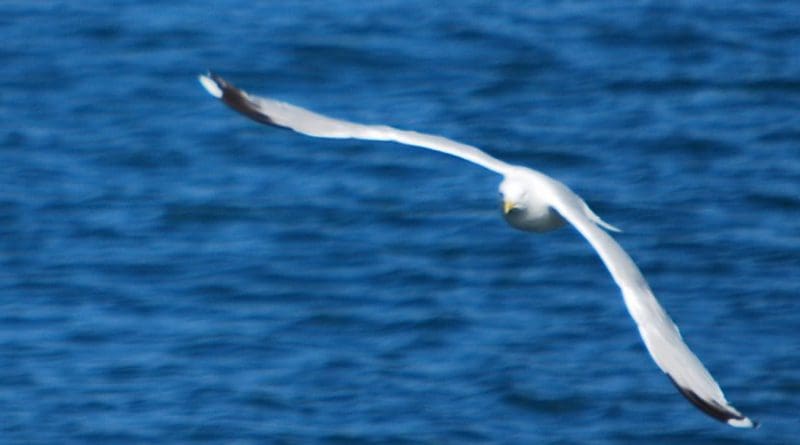Climate Change Also Threatens Survival Of Seabirds
Finding food to feed baby birds is getting more and more difficult for seabirds due the effects of climate change, according to a study published in the journal Nature Climate Change, carried out by an international team with the participation of the lecturers Jacob González-Solís and Raül Ramos, from the Faculty of Biology and the Biodiversity Research Institute (IRBio) of the University of Barcelona.
According to the study, seabirds have not adopted their breeding cycle to the new climate conditions, which are marked by global change. In a future time, the progressive rise of sea temperatures could create a lack of synchrony between the breeding and feeding period and the stages in which preys are more abundant in oceans.
The new study is the global result of the collaboration of a big international team of experts on seabirds, which is led by the University of Edinburgh, the Centre for Ecology and Hydrology (CEH) and the British Antarctic Survey (BAS), from the United Kingdom. The new study, with the support of the Natural Environment Research Council of the United Kingdom, analysed the breeding patterns of sixty-two seabird species from 1952 to 2016, a period that has been marked by the significant rise of temperature in the sea.
How do seabirds respond to global change?
Nowadays, seabirds are the most threatened group of birds, and the conservation status of many of the species –orders of Sphenisciformes, Procellariiformes, Suliformes, Pelecaniformes and Charadriiformes– are worsening every day. According to the study, seabirds cannot adapt their biological rhythm to temperature changes in the ocean surface while their most common preys (squids, sardines, etc.) are modifying breeding patterns as a response to global change.
The mismatch between the biological rhythms in seabirds and preys can make it harder for those seeking food (trophic cascade), in particular during the breeding season and feeding of chicks, a situation that would put the survival of many vulnerable populations at risk.
As part of the study, the UB-IRBio team studied phonological data –link between climate factors and biological cycles- of a Cory’s Shearwater (Calonectris borealis), which breeds in the Canary Islands archipelago.
According to Jacob González-Solís, lecturer from the Department of Evolutionary Biology, Ecology and Environmental Sciences of the UB and IRBio, “in particular, we could monitor the breeding of this bird population since 2001, which allowed us to contribute significantly to the final results of the study. According to the conclusions, within the area of oceanic areas in the Atlantic and the Mediterranean, long distance migratory species are expected to be the most affected ones, since they live at least in two different areas over the year”.
Ocean birds: a life under extreme conditions
Seabirds have extreme life history, with a life expectancy which is higher than the preys’, high adult survival, low fertility, and advanced breeding age. According to the lecturer Raül Ramos (UB-IRBio), “these factors make seabirds to be specifically sensitive to any environmental perturbation, whether it is direct or indirect”.
According to Ramos, predoctoral researcher in the Department of Evolutionary Biology, Ecology and Environmental Sciences of the UB, “this trophic cascade between seabirds and preys, due global warming, will be particularly harmful to the order of Procellariiformes, mainly for the giant petrels, fulmars and albatrosses”. These species, from the families of Procellariidae and Diomedeidae, show a lower flexibility in the offspring phenology. Also, seabirds with a higher climate response towards global warming and a trophic cascade are Pelecaniformes and Suliformes (that is, cormorants and gannets)”, noted the researcher.

